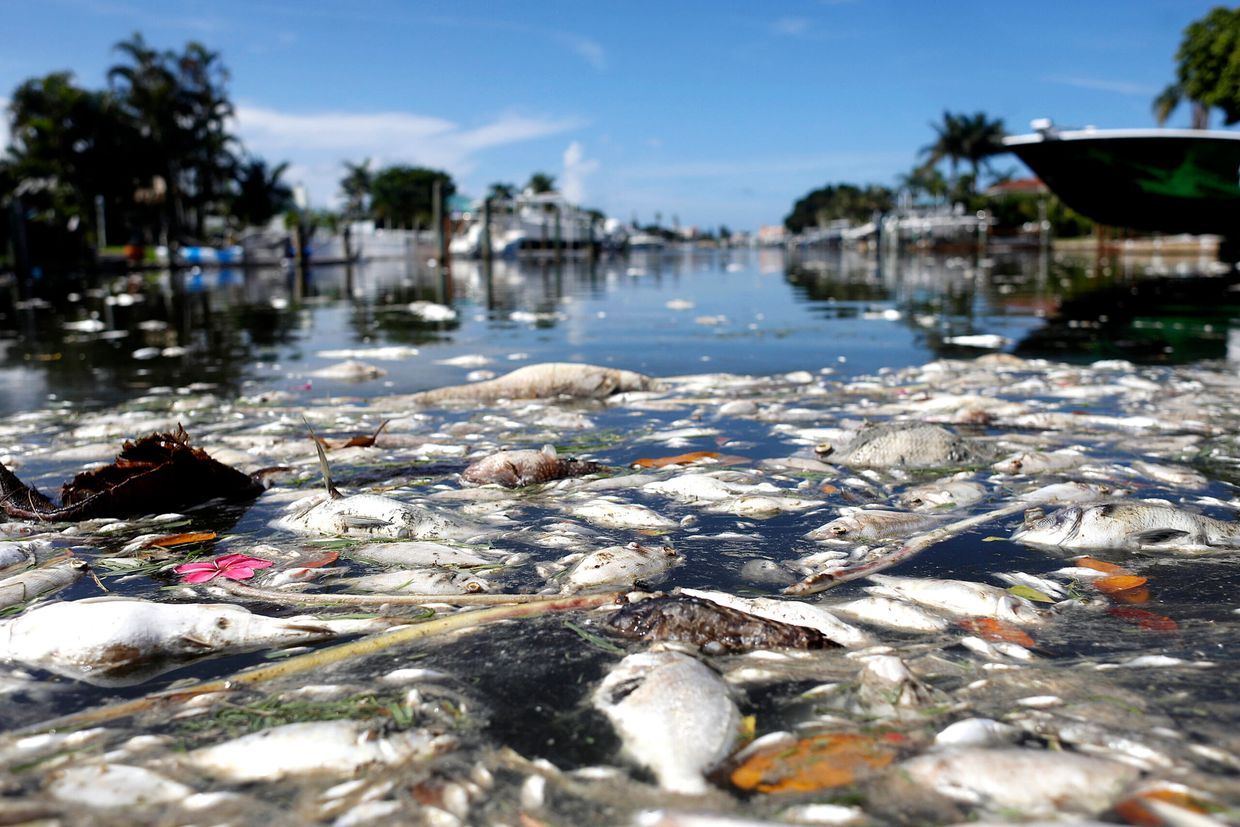Red Tide in Harbor Isle?

I was dismayed to wake up one morning in early July to the smell of dead fish behind my waterfront home in Harbor Isle for the first time in 32 years of living here – the red tide in downtown St. Petersburg had an impact I had never seen before. The dead fish were drifting off my dock.
Red tide is caused by the dinoflagellate algae Karenia brevis. It is a naturally occurring algae common in the eastern Gulf of Mexico. It usually thrives in high salinity environments and is rarely found in brackish water. Hence, most all of the red tides that have occurred during my years in Harbor Isle have occurred west of the Sunshine Skyway. However, the naturally occurring Karenia brevis can bloom in brackish water if it is fed “rocket fuel.” This red tide in St. Petersburg is a manmade event and is most likely caused by the recent influx of nutrients from the old phosphate waste dump at Piney Point. The hurricane the week before blew the nutrients in the general direction of downtown St. Petersburg causing a massive red algae bloom. Raw sewage releases can also cause large red tide blooms. The good news for Harbor Isle is that the water has much lower salinity than the open bay and gulf beaches, which would make it unlikely that an actual red algae bloom would occur here.
To test this theory, during the peak of the bloom, I decided to do some wade fishing behind my house. As I waded into the flat with a bucket of live shrimp, I noted a thin layer of dead fish surrounding the mangroves, but I saw numerous fish swimming alive on the flats. I subsequently had one of my best summer fishing days ever in the middle of the red tide with multiple different species present. I saw a tarpon roll, and a large dolphin swam up adjacent to me. It was great to see all this activity as I was expecting a far more dire situation. The dolphin continued to circle near me within 10 feet. I caught a large Jack Crevalle weighing approximately 10 pounds. As I released it, the dolphin surged forward and grabbed the Jack Crevalle almost out of my hands and leaped into the air with it in it’s mouth. It was clear the dolphin had probably swam through a large amount of red algae in the higher salinity bay to get to Harbor Isle and was clearly hungry. I quickly checked my shrimp bucket confirming that all my shrimp were still alive as they are my “canaries in the coal mine” – if there was an active red algae bloom in the water I was wading in, the shrimp would have died and the shrimp were clearly alive. The dead fish found drifting around my dock did not die here, but were washed in from the open bay where the red tide was active. Although this was good news for Harbor Isle, in the long term, the tons of fish that died in the downtown St. Petersburg area have me greatly worried about the future of the fishery and wildlife in Tampa Bay.
Having done my senior thesis in college on red algae, I am deeply concerned by the continued manmade red tide blooms caused by the infusion of large amounts of “rocket fuel” that include toxic phosphate dump, raw sewage and fertilizer runoff. It is important for the government leaders to do all they can to reduce the manmade impacts that result in greater Red tide blooms than would normally occur.
We are fortunate that the Harbor Isle bay waters are brackish enough to not have a direct red algae bloom. Hopefully, in the future, they will be able to control the Piney Point phosphate waste dump and the City of St. Petersburg will continue to improve its management of sewage treatment. A clean and healthy bay environment is one of the many reasons we live in Harbor Isle. Note: Although the smell of washed-in dead fish is unpleasant, it is unlikely that the residents of Harbor Isle would experience any respiratory symptoms related to red tide.
Copyright © 2023 Anderson Radiology - All Rights Reserved.
Powered by GoDaddy
This website uses cookies.
We use cookies to analyze website traffic and optimize your website experience. By accepting our use of cookies, your data will be aggregated with all other user data.
